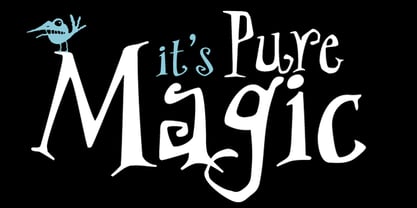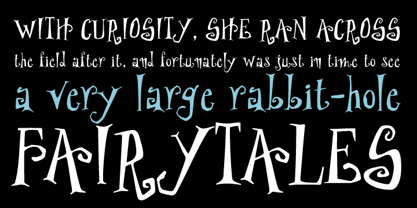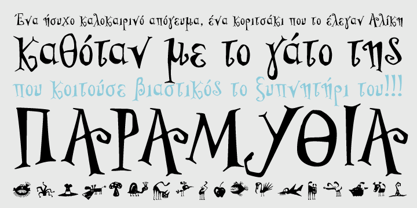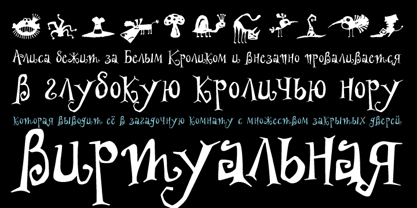Wählen Sie diesen Lizenztyp, wenn Sie eine app für iOS, Android oder Windows Phone entwickeln und Sie die Datei Font in den Code Ihrer mobilen Anwendung einbetten.
PF Wonderland™ Pro
von Parachute




Über die Schriftfamilie PF Wonderland Pro
Alice im Wunderland. Unschuldig, gefühlvoll, fast kindlich, sieht aus wie aus einem Märchen entsprungen. Die langen Stiele, die schrulligen Serifen und die lockeren Zeichen sowie die jugendliche Energie schaffen eine emotionale Bindung zu dieser Schrift. Also perfekt für Kinderbücher. Der Designer Dimitris Foussekis ergänzte diese Font mit einer passenden Serie von 62 Piktogrammen, den so genannten 'Wonderbats'. Die brandneue 'Pro'-Version wurde nun um alle europäischen Sprachen erweitert, indem sie gleichzeitig lateinische, griechische und kyrillische Schriftzeichen unterstützt.
Designer: Dimitris Foussekis
Herausgeber: Parachute
Foundry: Parachute
Eigentümer des Designs: Parachute
MyFonts Debüt: September 24, 2009
Über Parachute
Parachute ist eine Agentur für digitale Schriften Foundry und Designagentur, die sich auf maßgeschneidertes Schriftdesign, Corporate Schriften und Lettering spezialisiert hat. Wir nutzen die Kraft der Typografie, um lebende Marken in globale Marken zu verwandeln, ihre Identität zu bereichern und ihre Sprache in Schwellenländern zu lokalisieren. Wir geben uns nie mit dem Durchschnitt zufrieden, sondern schaffen es, den Westen mit dem Osten, den Norden mit dem Süden zu verbinden und Tradition mit Innovation zu kombinieren. Seit 2001 haben wir mit mehreren führenden Unternehmen zusammengearbeitet und Schriften für einige der weltweit bekanntesten Marken und Institutionen wie Bank of America, Apple, Europäische Kommission, National Geographic, Ikea, Kraft Foods, UEFA, Samsung, Financial Times, Pernod Ricard, Ogilvy und Emirates entworfen. Unsere Arbeit hat weltweit zahlreiche Auszeichnungen erhalten, darunter TDC, Red Dot, European Design Awards, Tokyo TDC, HiiiBrand, Granshan Awards, Communication Arts und viele andere.
Mehr lesen
Weniger lesen